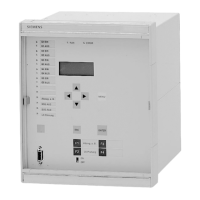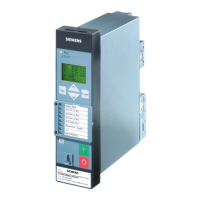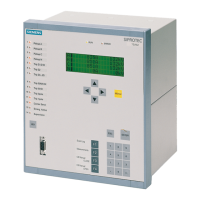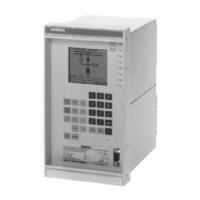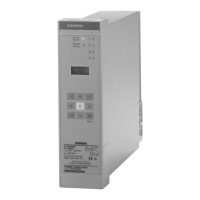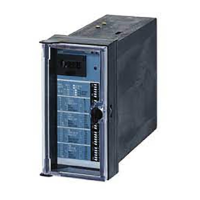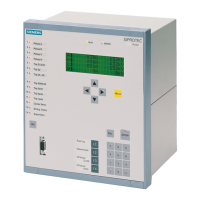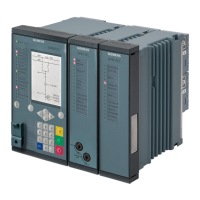Functions
2.14 Reverse-Power Protection Application with Flexible Protection Function
SIPROTEC, 7SK80, Manual
E50417-G1140-C344-A4, Release date 08.2010
220
Table 2-15 System data for the application example
Protection Functionality
With the protection device 7SK80, the substation is disconnected from the generator upon its feedback into the
power supply company's system (protection function P reverse>). This function is implemented by means of a
flexible protection function. Disconnection will also be initiated if frequency or voltage fluctuations occur in the
power grid (protection function f<, f>, 27-1 PICKUP, 59-1 PICKUP, 67N-1 PICKUP
dir
). The protection re-
ceives the measured values via a three-phase current and voltage transformer set. In the case of a disconnec-
tion, the circuit breaker CB2 is triggered.
The transformer is protected by a differential protection and inverse or definite time overcurrent protection func-
tions for the phase-to-phase currents. In the event of a fault, the circuit-breaker CB1 in the power supply com-
pany's system is activated via a remote link. In addition, the circuit breaker CB2 is activated.
Overcurrent protection functions protect the feeders 1 and 2 against short circuits and overload caused by the
connected consumers. The phase-to-phase currents and the zero currents of the feeders can be protected by
inverse and definite time overcurrent protection elements. In the event of a fault, the circuit breakers CB4 and
CB5 are activated.
In addition, the busbar could be equipped with the 7UT635 differential protection relay for multiple ends. The
current transformers required for that are already included in Figure 2-78.
Wiring Diagram, Power Direction
Figure 2-79 shows the wiring of the device for reverse power protection. The power flow in positive or forward
direction occurs from the high-voltage busbar (not shown) via the transformer to the low-voltage busbar.
System data
Generator nominal power S
Nom,Gen
= 38.1 MVA
Transformer nominal power S
Nom,Transf
= 38.1 MVA
Nominal voltage of the high-voltage side V
Nom
= 110 kV
Nominal voltage of busbar side V
Nom
= 11 kV
Nominal primary CT current on the busbar side I
Nom,prim
= 2000 A
Nominal secondary CT current on the busbar side I
Nom,sec
= 1 A
Nominal primary VT voltage on the busbar side V
Nom,prim
= 11 kV
Nominal secondary VT voltage on the busbar side V
Nom,sec
= 100 V
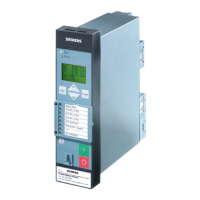
